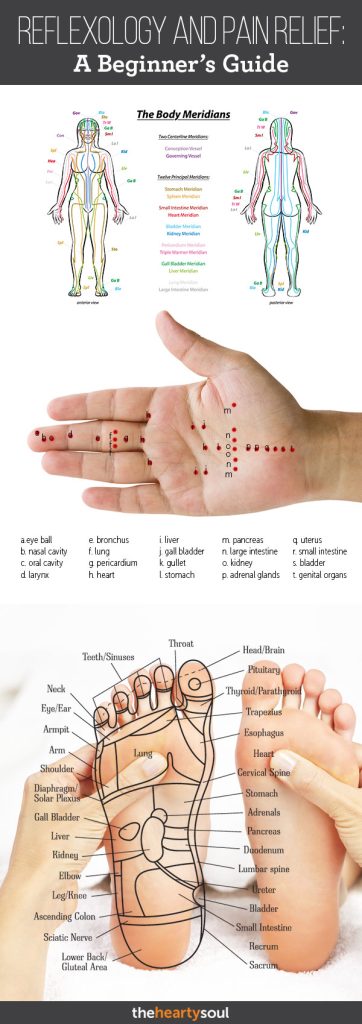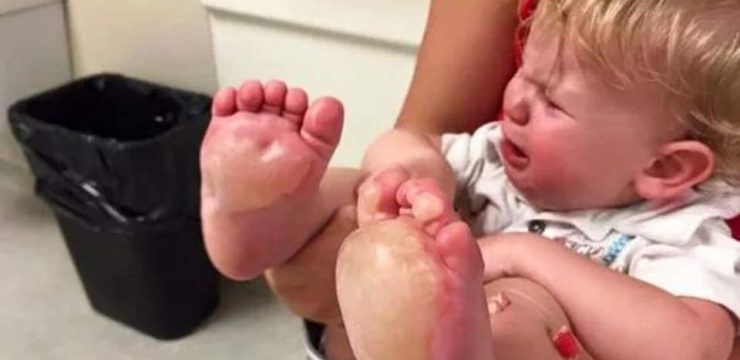Unlocking the Power of Reflexology: A Guide to Foot Pressure Points for Better Health
If someone told you that pressing certain areas on your feet could relieve neck pain or support your liver’s function, you might think it sounds far-fetched. Honestly, that’s a reasonable reaction! How can something as simple as a foot massage impact other parts of your body? While this may sound surprising to some, those familiar with reflexology know there’s more to it than meets the eye.
What is Reflexology?
Reflexology is a therapeutic practice rooted in the idea that specific “zones” or reflex areas on the feet and hands correspond to different organs, glands, and systems in the body. Practitioners believe that by applying pressure to these points, they can help alleviate stress, enhance physical functions, and promote overall well-being.
While modern medicine might not fully embrace reflexology as a cure for illnesses, many people around the world have experienced its benefits firsthand. At its core, reflexology is about fostering balance within the body, creating a relaxed state that encourages natural healing.
How Reflexology Works
The foundation of reflexology lies in the connection between the nervous system and specific reflex points. Each area of the foot or hand is thought to correspond to a particular body part. For example, the big toe might be linked to the head and brain, while the arch of the foot could correspond to the digestive system.
By stimulating these points, reflexologists aim to reduce stress, which in turn can have a cascade of positive effects on the body. Stress is often the root cause of various ailments, and anything that helps alleviate it can contribute to better health.
Benefits of Reflexology: Why Pressure Points Matter
Whether you’re dealing with chronic health issues or simply looking for a way to relax after a long day, reflexology can be a game-changer. Here are some notable benefits associated with foot pressure points:
- Pain Relief
Reflexology may help reduce pain in various parts of the body, from headaches to backaches. - Improved Nerve Function
Regular stimulation of reflex points can enhance the efficiency of your nervous system. - Increased Energy
Feeling sluggish? Reflexology might give you the energy boost you need. - Enhanced Blood Circulation
Better blood flow means improved oxygen and nutrient delivery throughout your body. - Detoxification
Reflexology is thought to help the body eliminate toxins more effectively. - Migraine Prevention
Targeted pressure on specific foot zones may help reduce the frequency and intensity of migraines. - Urinary System Support
Reflexology can promote healthier kidney and bladder function. - Faster Healing
If you’ve suffered an injury, reflexology might help speed up the recovery process. - Improved Sleep
Many people report better sleep after incorporating reflexology into their routines. - Reduced Depression and Anxiety
By promoting relaxation and reducing stress, reflexology can have a positive impact on mental health.
DIY Reflexology: How to Perform a Foot Massage at Home
Reflexology doesn’t have to be complicated or require a professional. With a little guidance, you can enjoy its benefits from the comfort of your own home. Here’s a step-by-step guide:
1. Set the Scene
Find a comfortable, sturdy chair to sit in. Make sure you’re in a quiet, relaxing environment where you can focus.
2. Position Yourself
Place one foot on the opposite knee so you can easily reach the sole of your foot. Keep your back straight to avoid unnecessary strain.
3. Use a Reflexology Chart
A reflexology foot chart is your roadmap to wellness. These charts highlight which areas of your feet correspond to different parts of the body. For example, if you’re experiencing neck pain, locate the corresponding area on the chart.
4. Apply Pressure
Using your thumb, press firmly on the targeted spot. Massage in circular motions or knead the area for 1-2 minutes. If you’re new to reflexology, start with gentle pressure and gradually increase it as you become more comfortable.
5. Switch Feet
Once you’ve massaged one foot, move on to the other. Make sure to spend equal time on both feet for balanced results.
6. Repeat for Other Areas
You can target multiple areas during a single session. Simply refer back to the chart and repeat the process for each zone you want to address.
Pro Tips for Maximizing Your Reflexology Experience
- Use Lotion or Oil: Adding a bit of lotion or essential oil can make the massage smoother and more enjoyable. Lavender oil, for example, is known for its calming properties.
- Stay Consistent: Reflexology works best when practiced regularly. Aim for a few sessions a week to see noticeable results.
- Listen to Your Body: If a particular area feels tender, it might be a sign that the corresponding body part needs attention. Be gentle and allow your body to guide you.
Final Thoughts: A Path to Wellness at Your Fingertips
While reflexology isn’t a replacement for medical treatment, it’s a powerful tool for promoting relaxation and supporting overall health. Whether you’re looking to relieve pain, boost energy, or simply unwind, a few minutes of targeted foot massage can make a world of difference.
Next time you’re feeling out of balance, take a moment to press pause—literally. With nothing more than your thumbs and a reflexology chart, you might discover a whole new way to take care of your body and mind.






